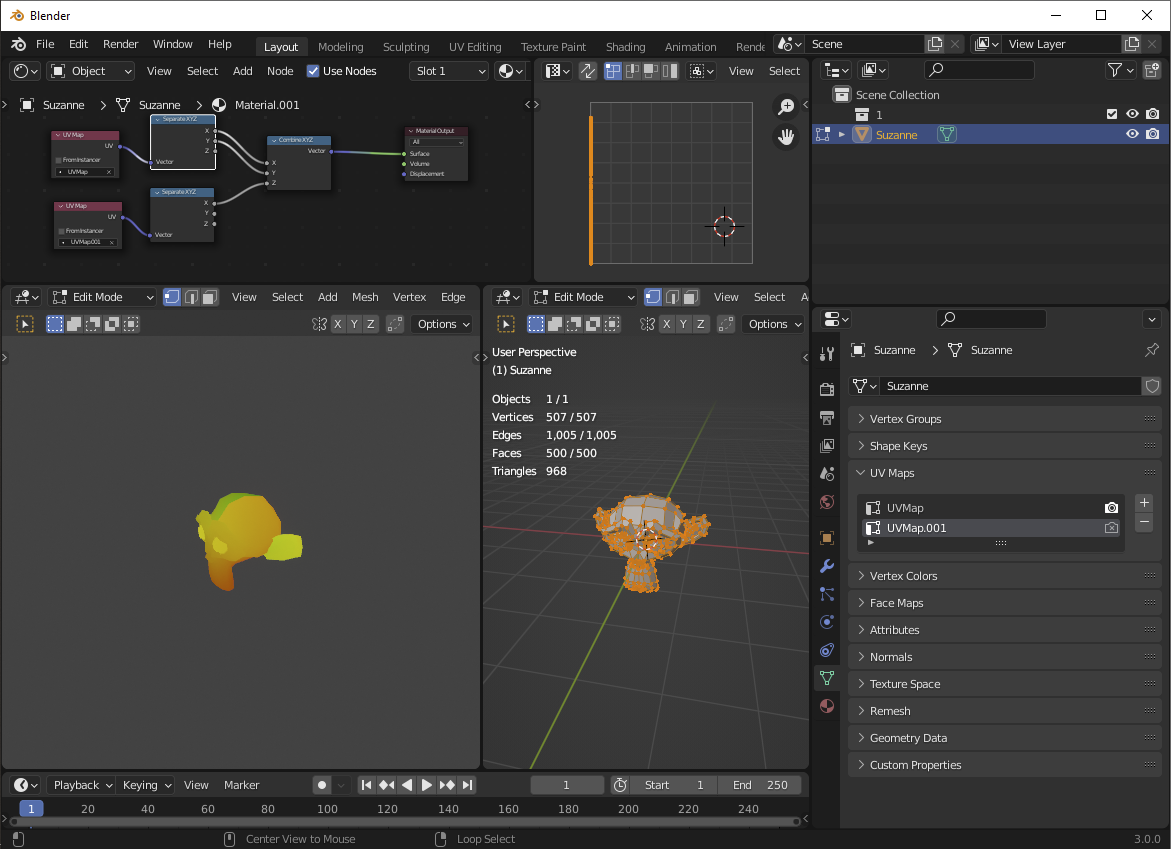You could set up a material to do a "texture array" in Blender. There would be no advantage to doing so. Texture arrays as you're talking about are intended as a replacement for texture atlasing, which is a technique intended to reduce the number of draw calls that game engines need. But Blender is not significantly bottlenecked by draw calls-- it is not optimized as a game engine, but as a "slow" rendering engine, and there are bottlenecks far more significant than draw calls in Blender! I'm unsure of the performance impact of texture arrays in something like Unity, but in Blender, use of a texture array is probably more likely to lead to a reduction in performance.
And setting up either a texture atlas or a texture array in Blender does nothing to set it up in a desired game engine. Your Blender materials won't have anything to do with your Unity materials.
So given all that, how can we implement?
First problem is 3D UV. Blender doesn't natively support it. But one bit of vertex data is just like another bit of vertex data. We can use one channel of a second UV map to create 3D UV:

UVMap, not shown, is your basic Suzanne UVMap. But I've created another UV map, UVMap.001, which is different: all the UV lies on the left margin. When we combine vectors as shown in the shader nodes, we're appending the U of UVMap.001 as a Z component onto the XY provided by UVMap's UV. So right now, that value is 0. (You can treat this as XYZ coords, you can treat it as UVW coords, it's the same thing. What it is is what matters, not what we call it.)
In later views, I'll collapse this shader structure into a node group to be able to focus on the other elements.
So then we can use this Z coordinate to specify which "layer" of a texture array we want to call. But how are we going to set up that texture array?

Notice especially the leftmost Suzanne, where I've rotated UV.Z so you can see how this mixes between elements in our texture array.
We can read all the textures, and then mix between them on the basis of UV.Z is greater than some fixed value. Here, I've made an interval of 0.33 to specify, since I'm doing it with a texture array that is 3 images thick. If you want, you can use some other thickness; and there's really no reason to limit ourselves to the 0,1 range for UV.Z, since we're not using it for tiling or anything.
BTW, in this particular case, we're sampling the array as if our Z component was being sampled on "closest" mode-- no texture filtering. So we get all one image, or all another. It's not necessary to do that; we could, for example, sample two images and interpolate between them to do texture filtering between array layers. If we were to do that, we'd see a smoother interpolation between textures on the leftmost Suzanne rather than hard borders where the texture switched.
And if we want, we can cleanly node group our texture array, so that we can use a different array for our normals, for our roughnesses, etc. The only thing that we need for the node group is a 3D vector input.



